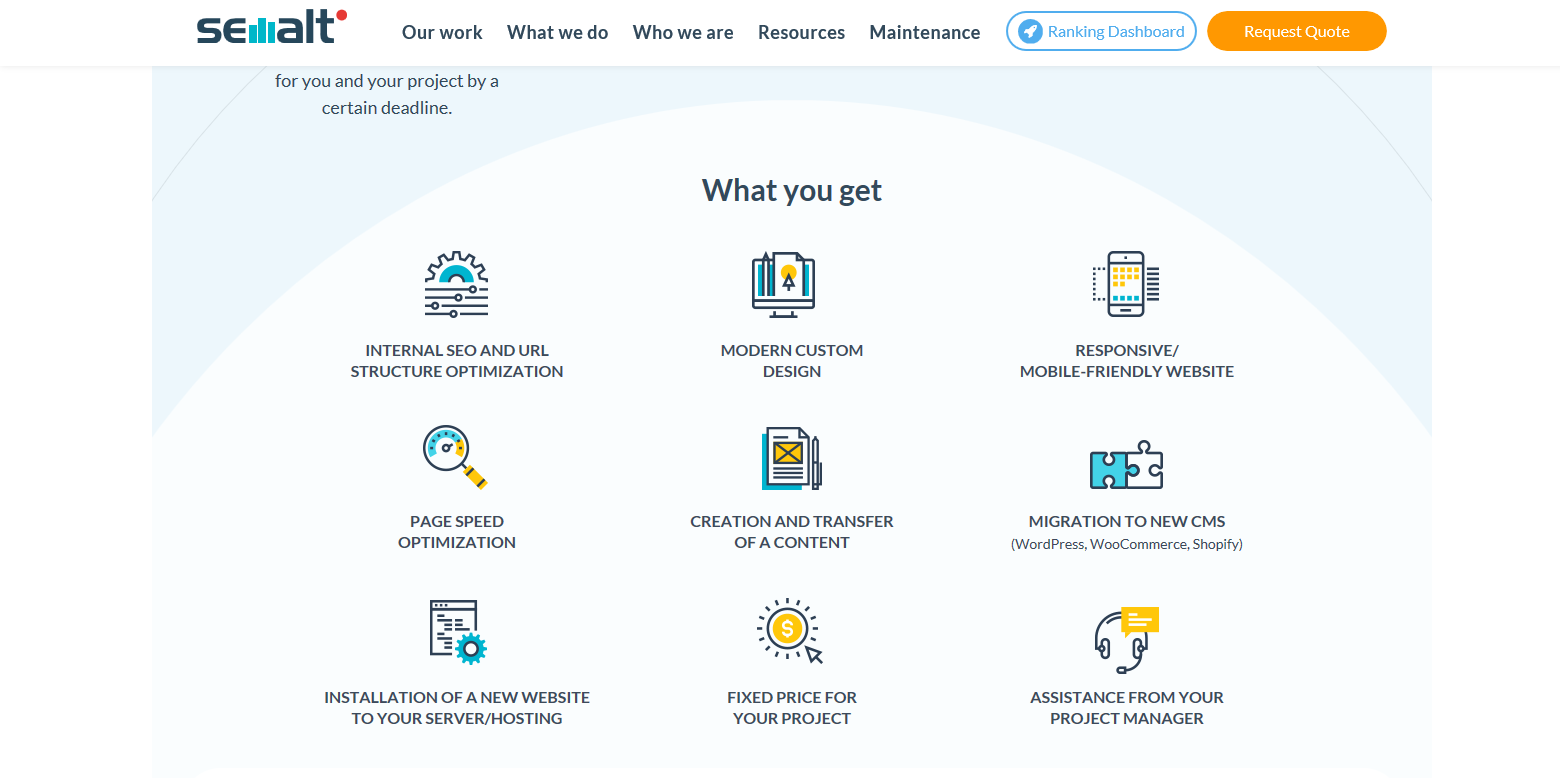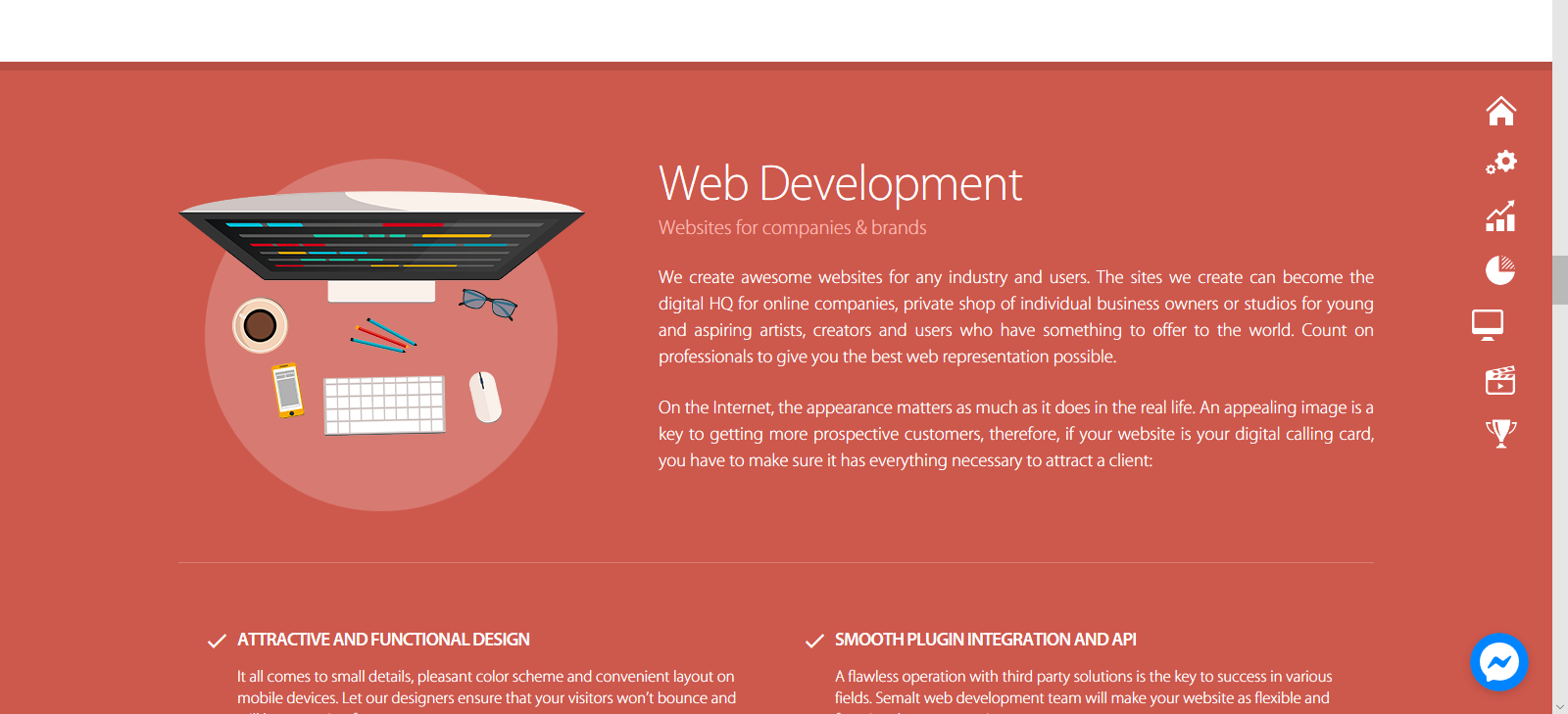Semalt Website Design And Seo

Table of Contents
- Codes that matter to Google
- SEO tips to a more Google-friendly web design
- Conclusion
SEO is not just about placing keywords strategically. Your website's design does affect your SEO. There is indeed no SEO without keywords, but Google demands more from you. Your website’s design has to be not only user-friendly but search engine friendly as well.
Having a fantastic web design is more important than ever if you are trying to find online success. At the same time, you also want it to be SEO compliant. Many times, a lot of people sacrifice one for the other. They favor other SEO techniques at the expense of great design while others put too much effort into having a stylish website and neglect basic SEO tactics.
Balance is the keyword in this situation. You must learn how to make your web design more optimized for search engines while still being stylish and aesthetic. We'll be looking at some tips to give you a web design that balances both ends of the spectrum.
Before we look at those tips; however, let's look at some of the codes used in your site that are quite important to Google.
CODES THAT MATTER TO GOOGLE
There are a whole bunch of codes that are important to Google. Let's look at a few that you can quickly update today that will be of help to your SEO.
1. Title tags: You also know them as meta titles. Before browsers started using tabs, some words used to show up at the top bar of your browser - that's a title tag. It's no longer shown though, but they are still relevant. They tell Google what it is you're offering and that's what is shown in search engine results pages (SERPs). So it is worth your time to improve the title tags of your webpages and posts.
A good title tag will help define a context and attract searchers to your site. Make sure you create a title tag that is unique and is a perfect description of your content. Be sure to keep it under 60 characters and you'll be good to go.

2. Meta description: You might still be hearing talks about meta tags and meta keywords. Let's face facts - meta descriptions do not have any impact on your SERP rankings. So should you ignore them? That’s a big NO. Although they do not affect your position on SERPs, they very well have a significant impact on CTR (click-through rates).
Google uses these descriptions as a snippet into what you have to offer on that page. They are like teasers to the real deal, so make sure you make a great sales pitch out of them.
They appear with the title tag, and together they can enforce a high click-through rate. Meta descriptions should be about 150 characters on the average, and they should focus on what the searchers need from your services at the moment they are searching for it.

3. H1, H2, H3 header tags: These tags are quite crucial for search engine optimization in that they help to serve as pointers to what is contained in the webpage/post, each of the sections and subsections once they are on the page.
Readers use these tags to understand what your content is about at a glance. They are used as context indicators by search engines. They tell Googlebot the content of the post, the important topics to be noted and how it relates to the intent of users in their searches.
Google considers some tags as more important than others. In Google's hierarchical system, H1 comes first, then H2, H3 and so forth. H1 serves as the main page heading or the title of the page/post.
So, as a rule of thumb, H1 generally refers to what a page is about while H2 is what a section in that page is about. H3 tells you what a subsection under a section in that page is about and so on. This is why they vary in importance to Google.
There are a whole lot of other codes that are of relevance to Google, but just take note of these for now. And there's only so much only you can do for your business. Why not focus on other aspects of your business while you lay the worries of tags and codes on the SEO experts at Semalt?

Now let's move on to those tips we mentioned earlier.
SEO TIPS TO A MORE GOOGLE FRIENDLY WEB DESIGN
1. Make use of content that Google web crawlers can read: The driving force of any website is content, and they are one of the most important factors for ranking on Google TOP. When designing your site, endeavour to structure your content properly. Remember to use headers, paragraphs, and links appropriately.
Websites that lack a lot of content usually have a hard time ranking on SERPs. This struggle can be avoided if they plan correctly in their design stages. For example, try as much as possible not to use images to replace text unless you're making use of a CSS technique that is used for background image text replacement.
2. Ensure your site navigation is Google friendly: If you do not know how to make Flash objects readable for Google crawlers, it can be a sad story for your SEO if you go ahead to use Flash to design the navigation of your website. Websites that use Flash usually give search engines a difficult time crawling them.
Since you use Flash most of the time for aesthetic reasons, why not make use of unobtrusive JavaScript and CSS which can give almost the same cool effects you're looking for without hurting your SEO?
3. Make sure scripts are placed outside of your HTML document: The faster search engines can get to the content of your site, the better. Excess code can make crawling your site slower, and this will impact your search rankings.
Google uses the content of your HTML document to view your site. If you don’t externalize your JavaScript and CSS codes, you will be adding several lines of avoidable code that will be most times ahead of your main content and make crawling them harder for the search engine. Endeavour always to externalize JavaScript and CSS when you are coding your site.
4. Block pages you don't want Google to index: You may have some pages on your website that you don't want search engines to add to their index. They could be pages that contain almost similar content.
For example, you have an e-commerce site and you have a sneaker of different colours for sale, but you create different pages for each them. It may be fine for you to create separate pages for the sneakers on your site but Google doesn't appreciate duplicate content, in fact, you will get penalized for it. So the best thing you can do is to prevent Google from indexing it.
There are other pages like this which add no real value to your website, such as server-side scripts or test pages for your new web design. Indexing them will hurt your SEO tactics. Asides penalties, these pages dilute your overall website's content density. Use a robot.txt file to prevent those pages from being indexed. Another thing you could do is to make a page under construction password protected or use a local web development environment.
5. Make your URLs search friendly: A search-friendly URL should not be difficult to crawl. Your URL should contain keywords that tell users what is on that page. Avoid making your URLs look like this:
- seocompany.com/seomaximize/business-final-version-seoupdate
- seocompany.com/businessseomaximizeupdatepage2
- seocompany.com/seo4yourbusinesstoday
Instead, try and go for a URL that looks like any of these:
- seocompany.com/products/autoseo
- seocompany.com/products/seo-personal
- seocompany.com/products/seo-professional
Be wary of content management systems that make use of automatically generated codes and numbers for URLs. A good CMS should give you the option to customize your site's URLs.
6. Go for good design and UX: Google always wants to give the best to its users and relying on keywords and content won't do justice to that. Hence their usage of certain indicators such as bounce rate and time spent on site.
If a user clicks on your site from a search results page and hits the back button very quickly (bounce), that tells Google that the user didn't like your website and they'll try not to bring up your site in the top-ranking pages.
If the user doesn't hit the back button immediately but doesn't spend adequate time on your page, Google considers it to mean that the user wasn't satisfied and so had to leave your site on time.
Besides, if you get your website's design and UX improved upon, your "bounce rate" will decrease and your "time on site" will increase, ultimately boosting your SEO. Let the amazing Semalt web design team handle your next web design and you’ll be glad you gave them a try. 

CONCLUSION
The quality of your website's design has a significant impact on your SEO performance. Ensure you make good use of the tips discussed in this article in your site's design and you will see massive improvements in your SEO.